What Is Wrong With New York’s Voting System and How Can It Be Fixed? (Video)
Voting rights advocates tally the reforms the state must implement to restore confidence in democracy after more than 125,000 Brooklynites were among many voters unable to cast ballots in the presidential primary because they'd been removed from voter rolls.On “Democracy Now!” on Wednesday, voting rights advocates tallied the reforms New York state must implement to restore confidence in democracy after more than 125,000 Brooklyn residents were among many voters unable to cast ballots in the presidential primary on Tuesday because they’d been removed from voter rolls.
New York Mayor Bill de Blasio said before the polls closed: “It has been reported to us from voters and voting rights monitors that the voting lists in Brooklyn contain numerous errors, including the purging of entire buildings and blocks of voters from the voting lists.”
On Monday, Truthdig reported that hundreds of New Yorkers filed a class-action lawsuit alleging authorities had tampered with their registration.
On “Democracy Now!” Kristen Clarke, president and executive director of the national Lawyers’ Committee for Civil Rights Under Law, described the problems that have been allowed to undermine New York’s voting system for years:
We are bottom of the list. We are—you know, New York is consistently at the bottom of the list when it comes to turnout and participation. When you look at election reforms that exist in other states, like same-day registration, preregistration opportunities for 16- and 17-year-olds, the ability to cast absentee ballots if you wish, none of those rules exist in New York. I’m really pleased that the comptroller has expressed an interest in shining a light on the New York City Board of Elections, but we’ve got to remember that that’s a band-aid solution. What we need is real reform out of Albany. We need lawmakers to finally follow through on election reforms that have been on the table for a long, long time and that are needed to bring New York into the 21st century. And looking at the numbers of votes cast yesterday, it appears that roughly 33 percent of voters turned out to vote. And that’s abysmal. Even in Maricopa County, where some voters had to endure wait times of up to five hours, you saw a voter turnout rate of about 50 percent. New York is always at the bottom of the list when it comes to turnout, and it’s time for real reform.
Clarke was joined in the discussion by Virginia Fields, president and CEO of the National Black Leadership Commission on AIDS and former borough president of Manhattan, and Mike Weisbrot, co-director of the Center for Economic and Policy Research, president of Just Foreign Policy and author of the new book “Failed: What the Experts Got Wrong About the Global Economy.”
A rushed transcript of the segment provided by “Democracy Now!” appears below.
—Posted by Alexander Reed Kelly.
AMY GOODMAN: We’re on the road on our 100-city tour in Denver, Colorado. Juan González is in New York.
JUAN GONZÁLEZ: Well, voting in New York City was marked by considerable chaos, particularly in Brooklyn, as tens of thousands of voters found their names had been removed from the rolls or that they were unable to vote at their polling station. The New York City Elections Board has confirmed that more than 125,000 Brooklyn voters had been removed from the rolls since November of 2015. There were also reports that polling staffs were unable to operate voting machines, gave out conflicting information and erroneously directed voters to alternate sites. New York City Mayor Bill de Blasio issued a statement Tuesday decrying the disenfranchisement, writing, quote, “It has been reported to us from voters and voting rights monitors that the [voting] lists in Brooklyn contain numerous errors, including the purging of entire buildings and blocks of voters from the voting lists.” Democratic candidate Bernie Sanders expressed concerns about New York’s voting process late on Tuesday, after rival Hillary Clinton won the state’s primary.
SEN. BERNIE SANDERS: While I congratulate Secretary Clinton, I must say that I am really concerned about the conduct of the voting process in New York state, and I hope that that process will change in the future. And I’m not alone about my concerns. The comptroller of the City of New York talked today about voter irregularities and about chaos at the polling places.
AMY GOODMAN: New York City Comptroller Scott Stringer said his office had received reports of polling stations that failed to open on time and poll workers who were unable to tell voters when they would be operational. Stringer ordered an audit of New York’s election authorities, citing deep concern over widespread reports of poll site problems and irregularities.
For more, we’re joined by Kristen Clarke, president and executive director of the national Lawyers’ Committee for Civil Rights Under Law. The lawyers’ committee leads the Election Protection program, which operates a voter hotline during elections. Still with us, Virginia Fields, president of the National Black Leadership Commission, as well as Mark Weisbrot, who is co-director of the Center for Economic and Policy Research.
Kristen, lay out for us what you understand took place yesterday. I mean, the admission by the city authorities that 125,000 voters were purged from the polls in one of New York City’s five boroughs alone, Brooklyn?
KRISTEN CLARKE: Yeah, this was far from a smooth election. Through our Election Protection effort, we operate a hotline, 866-OUR-VOTE, where we field complaints from voters across the state, across the country, during elections. We heard from over 900 voters across the state who reported issues that range from, you know, poll sites that opened late, arrival to poll sites where they were directing voters elsewhere because of technical problems. We heard from voters who have been longtime affiliated with one party, but were told that they were ineligible to participate in the party primary yesterday. It’s clear that there were breaks in the system and that more work needs to be done to ensure that we have a smooth process that allows every eligible voter to cast a ballot.
JUAN GONZÁLEZ: Well, you know, I’ve been covering New York City politics now for close to 30 years. And I want to ask Virginia Fields to comment on this, because she’s a veteran of the political wars. And while it’s certainly true that there’s a lot of questions about what happened in Brooklyn, I would counsel people not to jump to conclusions about some kind of a suppression operation, because the New York City Board of Elections is notoriously incompetent. Virtually every election, there seem to be problems—small elections, large elections—with the handling of voters and registration. Virginia Fields, I’d like you to comment on that, as well.
VIRGINIA FIELDS: Well, first of all, I think it’s outrageous, what we heard about yesterday, over 125,000 voters. With so many changes that have taken place in terms of locations where people vote, not being able to vote if you have moved from one election district to another election district, even though it might be across the street, I think, at this stage, with technology and all we know, that the Board of Elections should be in better control in terms of communicating these changes far in advance. Here in New York state this year, as you know, we have four elections: yesterday, one in June for congressional, our regular primary in September, then the general election in November. There has been sufficient time to address these issues. And I think the Board of Elections must be held accountable, and changes need to take place from the top down. I don’t accept what I’ve heard.
AMY GOODMAN: Can you, Kristen Clarke—Kristen Clarke, can you talk about why New York’s voting system seems especially bad? I mean, how does it compare to the rest of the country?
KRISTEN CLARKE: We are bottom of the list. We are—you know, New York is consistently at the bottom of the list when it comes to turnout and participation. When you look at election reforms that exist in other states, like same-day registration, preregistration opportunities for 16- and 17-year-olds, the ability to cast absentee ballots if you wish, none of those rules exist in New York. I’m really pleased that the comptroller has expressed an interest in shining a light on the New York City Board of Elections, but we’ve got to remember that that’s a band-aid solution. What we need is real reform out of Albany. We need lawmakers to finally follow through on election reforms that have been on the table for a long, long time and that are needed to bring New York into the 21st century. And looking at the numbers of votes cast yesterday, it appears that roughly 33 percent of voters turned out to vote. And that’s abysmal. Even in Maricopa County, where some voters had to endure wait times of up to five hours, you saw a voter turnout rate of about 50 percent. New York is always at the bottom of the list when it comes to turnout, and it’s time for real reform.
JUAN GONZÁLEZ: And when you talk about real reform, I remember just a few years ago, after a particularly contentious congressional race to a challenge of Charles Rangel in Harlem, there were City Council hearings, there were promises of reform of the Board of Elections. What do you think needs to happen to be able to finally fix New York’s broken electoral system?
KRISTEN CLARKE: Well, we need all of these folks who are expressing angst today, and the comptroller, the mayor, to really direct that energy towards Albany. We need lawmakers in Albany to finally, finally follow through on the need for an election overhaul in New York. We need same-day registration. We need automatic voter registration, so that people can be added to the rolls and their information can be easily updated. We need preregistration opportunities for 16- and 17-year-olds. We need real in-person early voting opportunities. And it is simply shameful that in 2016 we don’t have those kinds of reforms in place in New York. So, all of this angst today, I think, needs to not be directed on issuing reports and shining a spotlight on all of the issues that we already know are there and are broken. It’s time for real reform to come out of Albany, and time for lawmakers to put pen to paper and bring New York into the 21st century.
AMY GOODMAN: Kristen Clarke, we’ve talked about the 125,000 people purged from the rolls, but what about this issue that it’s a closed primary in New York? Who determines that? Why do they determine that? And what exactly this means, that, you know, you—if you wanted to vote in this primary, for independents, for example, they had to have switched their party affiliation, say, to Democrat, by early October? This is before any debates. This is before any primaries. Of course, someone like Bernie Sanders, his large attraction is with independent voters. It had a huge effect on who could vote, outside of the 125,000 purged in just one borough.
KRISTEN CLARKE: Right. So, there are about half the country—about half of states around the country have closed primaries or some version of a closed primary. You know, the issue in New York is that we don’t have real notice and communication, clear communication, to voters about the rules and about the deadlines. And often these deadlines are so far out that voters aren’t even focused on the process. Part of this election overhaul needs to be putting more resources into the hands of local boards of elections, so that they can be held accountable and so that they have the ability to give and impart accurate and clear information to voters, so that they know what the rules are and know what the deadlines are.
The New York City Board of Elections, I think that it’s been a fiasco this cycle. They issued notice to about 42,000 new voters, advertising the primary election in the fall. That notice had the wrong date. They issued a second notice that had the correct date of the primary but failed to mention yesterday’s primary happening on April 19th, and then had to do a third notice to voters that made clear the April 19th primary and the primary happening this fall. These kinds of problems are intolerable. They lock people out of the process. If people don’t have accurate and clear information about when to vote and what they need to vote, then we ultimately are disenfranchising voters, and that should not be tolerated. So, part of this election overhaul that we need requires putting more hands into local boards of elections, putting more resources into local boards of elections, so that they have the ability to do their job right.
JUAN GONZÁLEZ: And finally, Mark Weisbrot, I’d like to ask you about this issue of the closed primary. There are those who say, “Well, political parties exist as separate organizations, and if you want to participate in the selection of that party’s candidate, you should be a member of the party.” You know, now, admittedly, a year beforehand is far too long for someone to be able to switch their registration. But the issue of whether parties should be able to restrict, as some states do, the selection of their candidates only to party members?
MARK WEISBROT: Yeah, I think—I think it’s much better if you have more participation in the country, especially—you know, you can make a case if this were more of a parliamentary system or you didn’t have this two-party system, where they’re basically like state institutions in the sense that it’s so difficult, almost impossible, for a third party to have a chance. Then, you really should have these primaries as open as possible. And, you know, this country really is what it is today in a large part because of disenfranchisement. If you had voter participation rates like you have in Europe or even some, you know, middle-income developing countries, you’d have a very different electorate. And, of course, the Republican Party knows that. That’s their main strategy for survival, is all about disenfranchisement. You know, they use the control over the state legislatures and the governors to redistrict and to—you know, this big offensive to disenfranchise people. That’s their strategy for going forward. And so, we really need voter reform, I would say, at least as much as campaign finance reform. We’d really see a very different politics in this country if we—if people voted.
AMY GOODMAN: Well, we want to thank you all for being with us, Kristen Clarke in Washington, president and executive director of the national Lawyers’ Committee for Civil Rights Under Law, lawyers’ committee leading the Election Protection program, which operates a voter hotline during elections; also, Virginia Fields, president and CEO of the National Black Leadership Commission on AIDS, former borough president of Manhattan; and, finally, Mark Weisbrot, co-director of the Center for Economic and Policy Research, and president of Just Foreign Policy. His book, Failed: What the Experts Got Wrong About the Global Economy.
Mark, we’d like to ask you to stay, because we’re going south next, from Brooklyn to Brazil, to the impeachment of Brazil’s president. Is it a coup? That’s what we’ll be talking about in New York and Rio de Janeiro. This is Democracy Now! We’ll be back in a minute.
Your support matters…Independent journalism is under threat and overshadowed by heavily funded mainstream media.
You can help level the playing field. Become a member.
Your tax-deductible contribution keeps us digging beneath the headlines to give you thought-provoking, investigative reporting and analysis that unearths what's really happening- without compromise.
Give today to support our courageous, independent journalists.
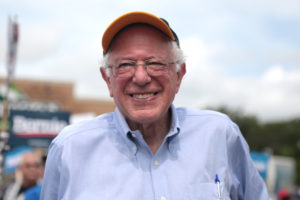
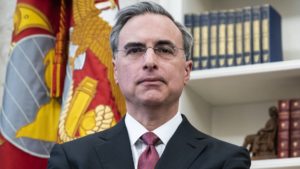
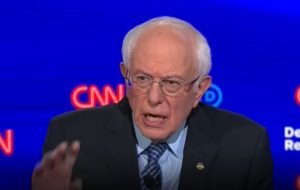

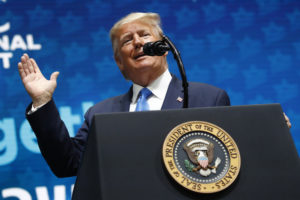
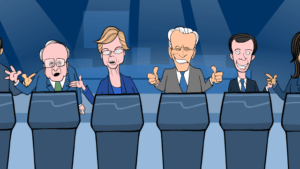


You need to be a supporter to comment.
There are currently no responses to this article.
Be the first to respond.